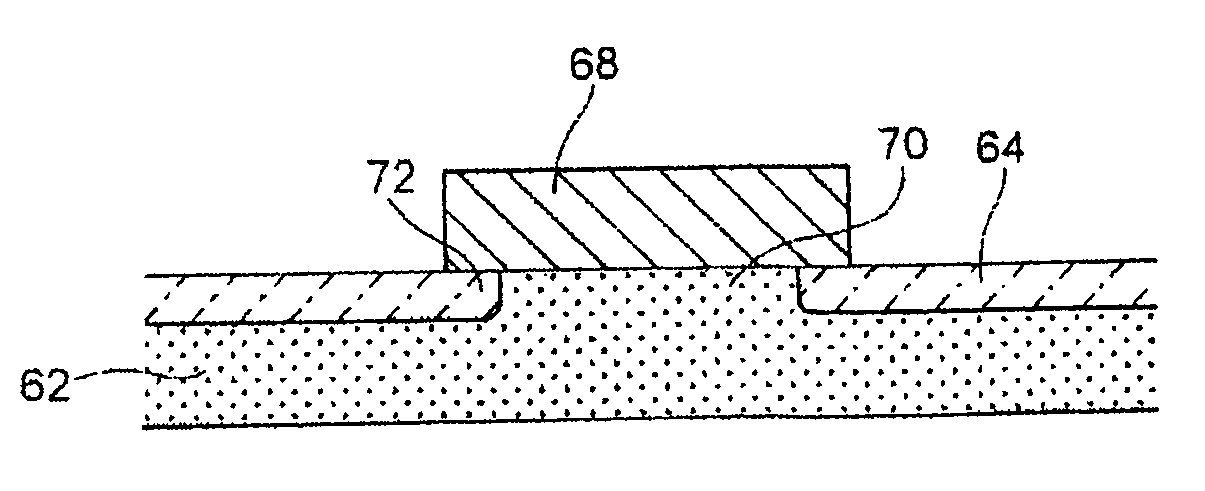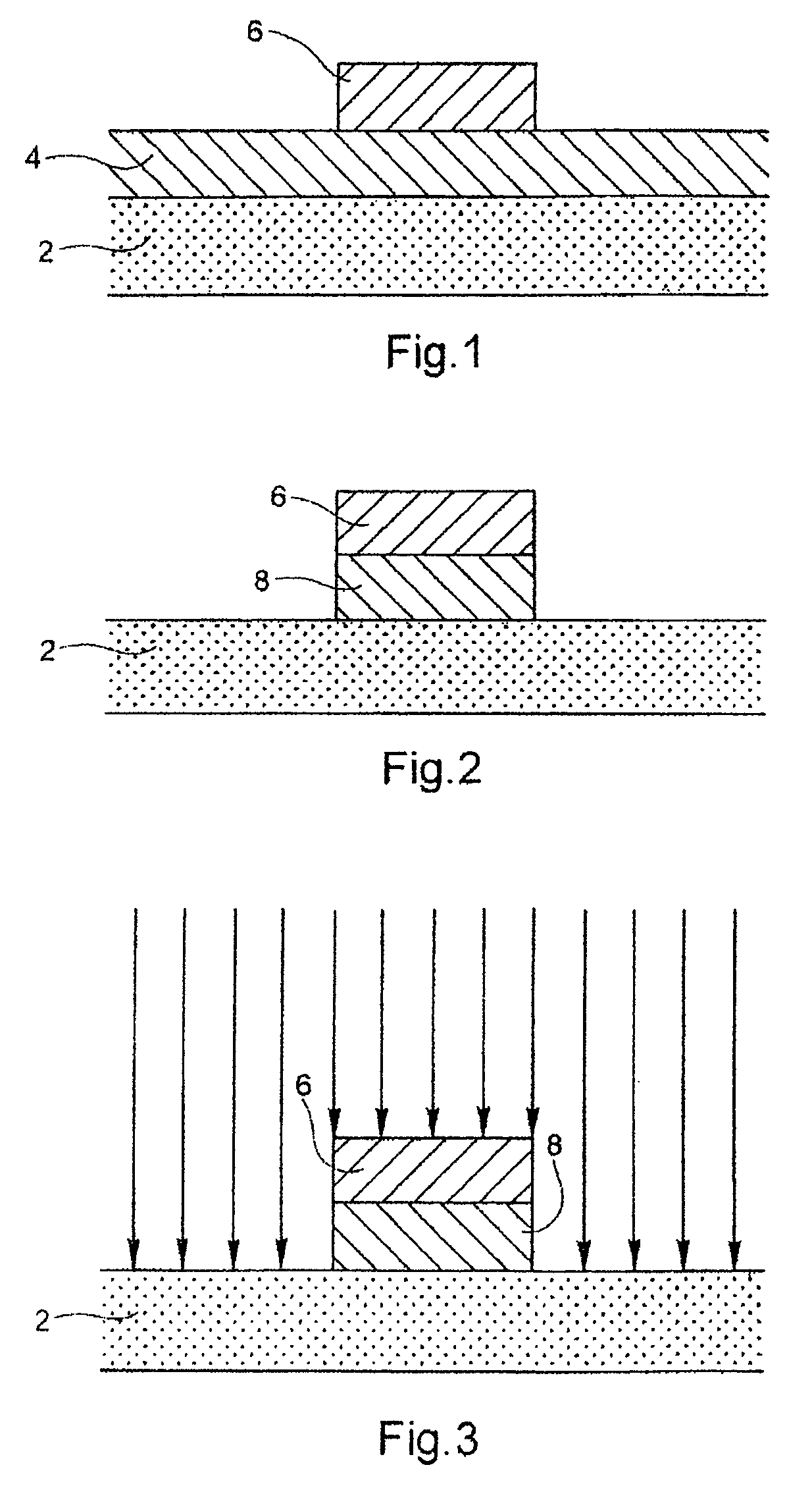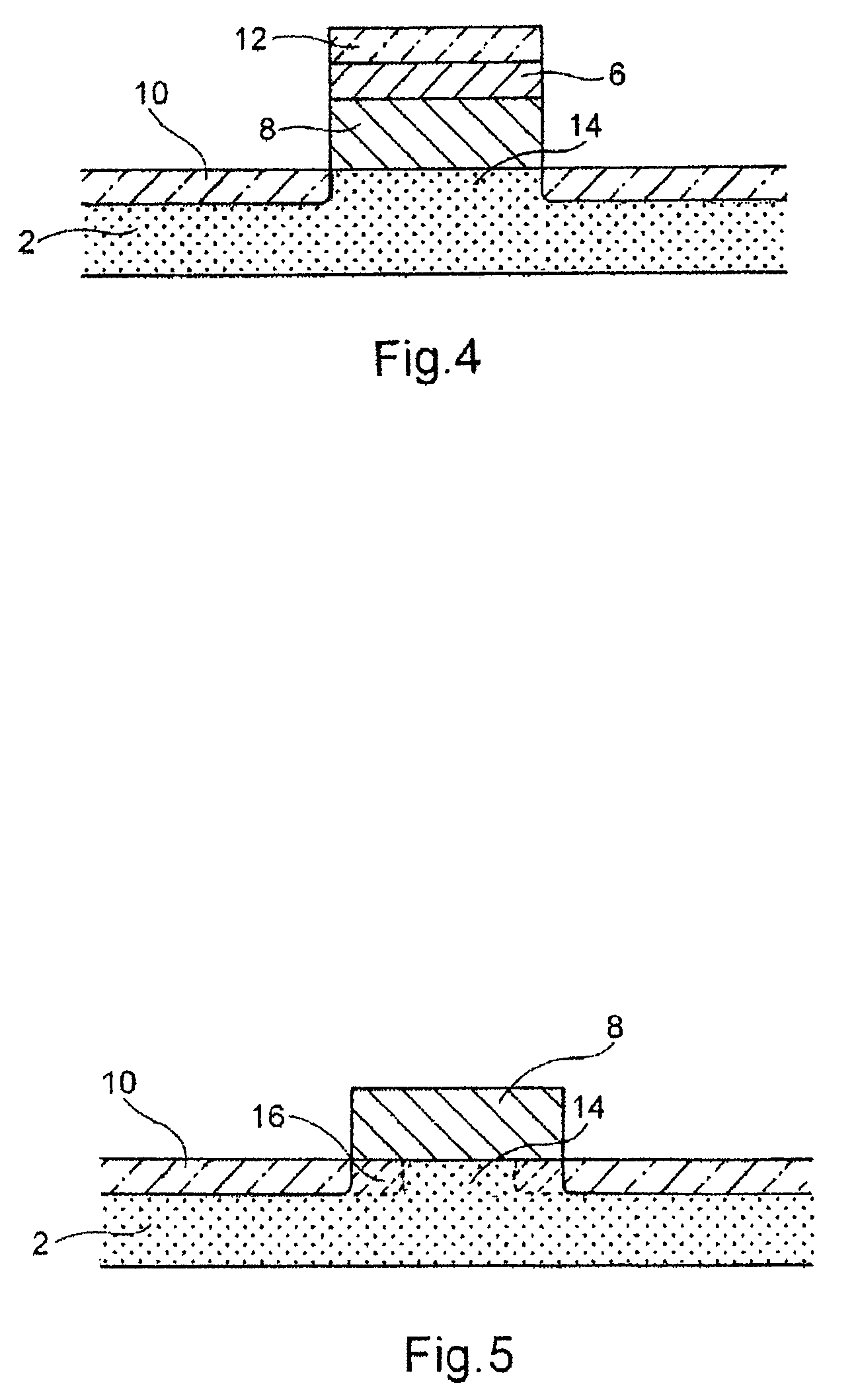Thin layer element and associated fabrication process
a technology of layer elements and fabrication processes, applied in the field of thin layer elements, can solve the problems of agglomeration and disastrous for the continuation of the fabrication process, and achieve the effect of stabilizing the layer pattern
- Summary
- Abstract
- Description
- Claims
- Application Information
AI Technical Summary
Benefits of technology
Problems solved by technology
Method used
Image
Examples
second embodiment
[0051]Implantation of the pattern is not harmful in all cases, as explained in more detail below with reference to the FIG. 7 represents the profile of the concentration of atoms of arsenic (As) in the buried layer 2. The depth in the buried layer 2 relative to the upper surface of the buried layer 2 that is implanted is plotted on the abscissa. As in FIG. 6, the concentration of atoms of arsenic per cm3 is plotted on the ordinate.
[0052]If a 5 keV implantation energy is used (continuous line in FIG. 7), the typical depth of implantation is slightly less than 10 nm. Note that this typical depth is slightly greater than the depth of implantation obtained with the same energy in the nitride mask 6. In the case of a 10 keV energy (dashed line in FIG. 7), the depth of implantation is of the order of 15 nm.
[0053]When implantation is completed, there may follow an annealing step to ensure lateral diffusion of the implanted species into the buried layer 2. This results in doping of the per...
first embodiment
[0070]Due to the presence of these implanted regions 34, 36, as much on the surface of the buried layer 32 as within the thin layer pattern 38, the following two physical phenomena can work together to prevent dewetting of the thin pattern 38:[0071]modification of the surface energies of the buried layer 32 in the regions 34 thereof that do not carry the thin pattern 38, so as to modify the contact angles (in a similar manner to the effect produced in the first embodiment); and[0072]reduction of the speed of diffusion at the surface of the thin layer 38 by the doping of at least a significant portion 36 thereof.
[0073]The above two phenomena combine to keep the thin pattern in the form of a compact mass, especially if the thin layer element is heated to high temperatures, for example for cleaning by desorption. As is apparent, the combined application of the above two phenomena nevertheless implies that the doping of the thin pattern 38 does not cause problems in subsequent use of th...
third embodiment
[0074]In another embodiment, examples of which will be given below, implantation may be carried out before the layer-pattern structure is constituted. FIGS. 14 to 16 show the invention that uses this feature. In this embodiment, a layer 52 of silicon oxide (SiO2) undergoes implantation with a chemical species (for example arsenic) as shown diagrammatically in FIG. 14. After implantation, the layer therefore has the overall profile represented in FIG. 15, that is, a surface region 54 of the layer 52 that has undergone implantation and is therefore doped with the chemical species, while the buried regions of the layer 52 have not been significantly affected by the implantation.
[0075]The layer-pattern structure is then produced, for example, by forming the pattern 58 by a method analogous to that represented in FIGS. 1 and 2, or alternatively by individual or collective transfer of patterns onto the implanted surface, for example using molecular bonding. Due to the doping of the surfac...
PUM
| Property | Measurement | Unit |
|---|---|---|
| thickness | aaaaa | aaaaa |
| depth | aaaaa | aaaaa |
| angle of incidence | aaaaa | aaaaa |
Abstract
Description
Claims
Application Information
 Login to View More
Login to View More - R&D
- Intellectual Property
- Life Sciences
- Materials
- Tech Scout
- Unparalleled Data Quality
- Higher Quality Content
- 60% Fewer Hallucinations
Browse by: Latest US Patents, China's latest patents, Technical Efficacy Thesaurus, Application Domain, Technology Topic, Popular Technical Reports.
© 2025 PatSnap. All rights reserved.Legal|Privacy policy|Modern Slavery Act Transparency Statement|Sitemap|About US| Contact US: help@patsnap.com



